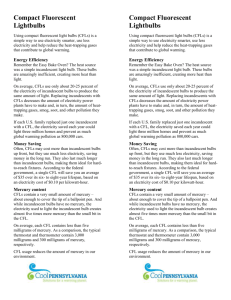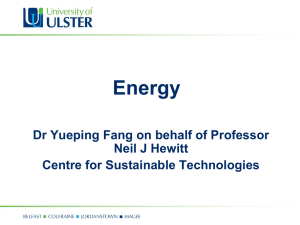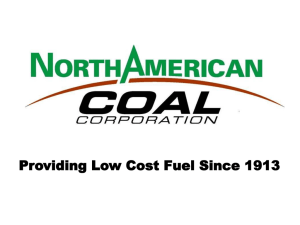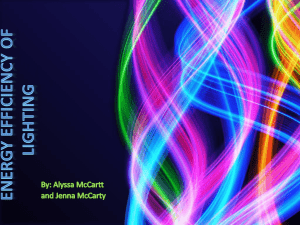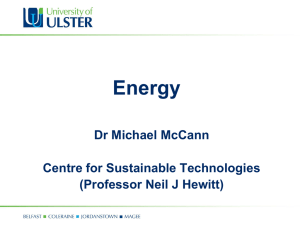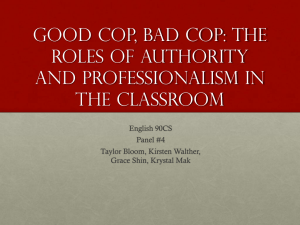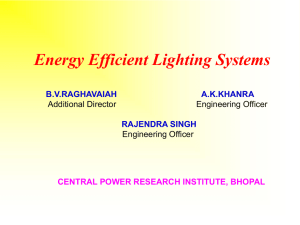lecture_15
advertisement
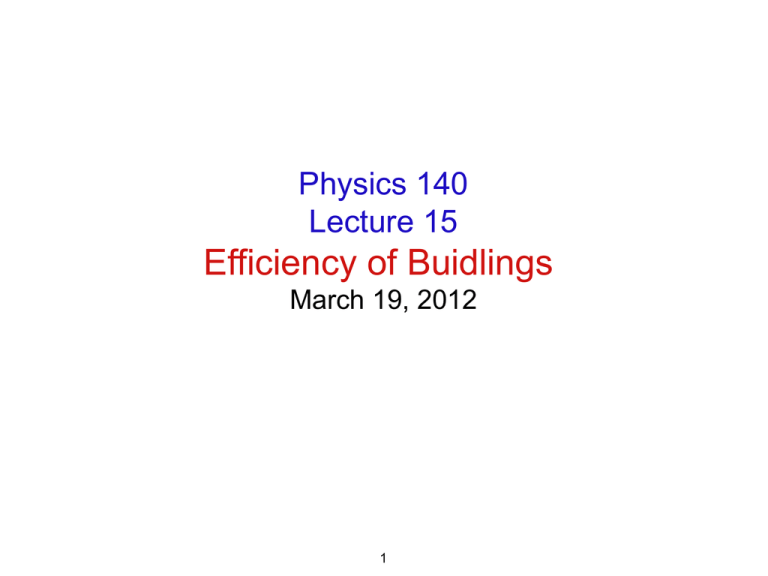
Physics 140 Lecture 15 Efficiency of Buidlings March 19, 2012 1 Announcements 1) Homework 4 is due in class on Wednesday March 28 2) Prof. Schnetzer will not be holding office hours this week 2 Efficiency in the Building Sector 3 Energy Usage in the US Buildings account for 39% of US primary energy use This corresponds to 36% of US carbon emissions 4 Why not 39% ? Growing Demand Building energy demand expected to grow by 30% by 2030 Goal of no net increase in building energy use requires 30% average improvement in building efficiency by 2030 5 Where Does the Energy Go? Residential (55% of building total) Commercial (45% of building total) 6 What Can be Achieved Use of energy in buildings • • • heating / cooling lighting electrical appliances responsible for about 36% of GHG emissions Improvement of average building efficiency by 30% will reduce carbon emission by 10% World wide this saves 0.8 Gt of carbon emissions per year About one wedge 7 How to Improve Building Efficiency Better insulation Window coatings Higher efficiency heating and cooling White roofs Higher efficiency lighting Occupancy sensors Higher efficiency electronics 8 Better Insulation Aerogel insulation a gel in which the liquid has been replaced by air sometimes called solid air basically a nanofoam • lightweight • strong • extremely high thermal resistance high R-value temperature difference across a material divided by incident heat power per unit area good insulators have large R-values Silica aerogel has about a ten times larger R-value than standard building wall insulation 9 Window Technology Double pane with inert gas (argon) filling to reduce convective heat flow Low-emissivity coatings on facing pane surfaces to reduce radiative heat flow Low-E coatings are microscopically thin, virtually invisible, metallic oxide layers They reducing solar radiation into the house (in summer) and radiation of indoor heat to outside (in winter) 10 Heating If you have a gallon of fuel and a cold house what is the best way to heat it? Burn the fuel and use the heat produced? No! Better to use a heat pump. It will amplify the amount of heat produced Heat Pump A heat engine running in reverse. Using energy it takes heat from a cold temperature and deposits the heat at a higher temperature. A refrigerator is an example 11 Heat Pump Heat engine Heat pump A 33% heat engine operating in reverse would deliver 3 times as much heat as the energy it uses. Gain of factor of 3 12 Coefficient of Performance (COP) COP is the amplification factor. COP = QH / W It is the heat delivered divided by the energy used. Recall from thermodynamics the efficiency of a heat engine is given by: efficiency = maximize efficiency by maximizing temperature difference If we run this heat engine in reverse we get a heat pump with COP given by: COP Heat pumps work best when temperature difference is small maximize COP by minimizing temperature difference 13 An example Supplying 1 unit of home heating energy 70% efficient natural gas furnace requires 1.4 units of natural gas primary energy electric heat pump COP = 3.3 with electricity from coal burning plant requires 0.9 units of coal primary energy In terms of carbon emissions the gas furnace wins ! 14 Carbon Emissions 1.4 units of natural gas vs. 0.9 units of coal remember for a given amount of energy coal releases 1.8 times as much carbon dioxide as natural gas But • COP of 3.3 is typical for today’s heat pumps but in principle COP’s as high as 14 are possible • in the future a larger fraction of electric power will be produced by natural gas In the long term heat pumps win! but remember heat pumps don’t work well (COP is close to one) in very15cold climates Light Colored Roofs A simple low tech way to save energy White roofs In the summer absorbs less solar radiation In the winter radiates less energy to the sky seems like a no-brainer 16 Lighting Incandescent Light Bulb only about 5% of electrical energy converted into light Compact Fluorescent Light (CFL) bulb about 20% of electrical energy converted into light Four times less energy for a given amount of light 17 Carbon Savings The amount of incandescent lighting in the US corresponds to about 3 billion 100 W light bulbs Recall that we calculated that a 100 W bulb on continuously releases about 500 pounds (0.25 tons) of carbon per year (assuming electricity from coal burning plants) 3 billion bulbs on for 2.5 hours per day releases (3 billion) x (2.5 hours / 24 hours) x (0.25 tons) = 80 Mt If all were replaced by CFL’s the carbon emission would be reduced by a factor of four We would save 60 Mt of carbon emissions per year 6% of a wedge 18 Economics of CFL’s Compact Fluorescent Light (CFL) bulbs are expensive they cost 3 to 10 times more that incandescent bulbs but they last 8 to 15 times longer and they use 4 times less electricity Replacing all of the incandescent bulbs in your house would cost about $90 But you would save $400 to $1000 over five years Do it! 19 Solid State Lighting Light emitting diode (LED) lamps may be the lighting technology of the future factor of two better efficiency than CFL’s Currently niche market traffic lights flashlights Further developments needed white LED lights brighter bulbs 20 Higher Efficiency Appliances Since 1970 appliance efficiencies have improved dramatically These trends are expected to continue with expected reduction of about 10% of projected electrical energy useage by 2020. This corresponds to a carbon emissions savings of 10 Mt per year 21 Legislating Efficiency Note in the plot on the previous slide that efficiency improvements only happened when they were legislated (shown by the location of the arrows on the plot). The cost savings are real but electricity cost are too small and the future savings too abstract for the consumers themselves to demand action. California has led the way but we need aggressive national efficiency standards. 22 The Standby Problem Most modern electronic devices: printers, microwaves, TV’s, DVD players, cable boxes , etc. are in “standby” mode and continue to use power even when turned off. On average these consume about 2.5 W of continuous power. It’s estimated that the average household has 40 of these devices. (Not mine!) That’s 100 W of continuous power or 500 pounds of carbon emission per year per household. It represents 8% of the average US household electricity consumption This is crazy! 23 Zero Energy Buildings A Zero Energy Building (ZEB) is one that is “off grid.” It uses no electricity from the electric power grid. Goal: • most new residential buildings ZEB by 2020 • most new commercial buildings ZEB by 2030 Achievable but will require • significant advancement of building technology • development and widespread adoption of integrated building design and operation practices Need national building codes tailored to local conditions How do we get to ZEB? 24 Toward ZEB Generally accepted approach is to reduce household energy use by 70% using techniques such as those we;ve mentioned • • • switch to CFL lighting (30%) better appliance efficiency (30%) elimination of standby mode (10%) Then get remaining 30% from on-site electricity generation. In a future lecture on solar energy, we’ll discuss the feasibility of getting 30% of household electricity from on-house solar panels 25 Putting it All Togehter Example of Integrated Design for ZEB Commercial Building 26





